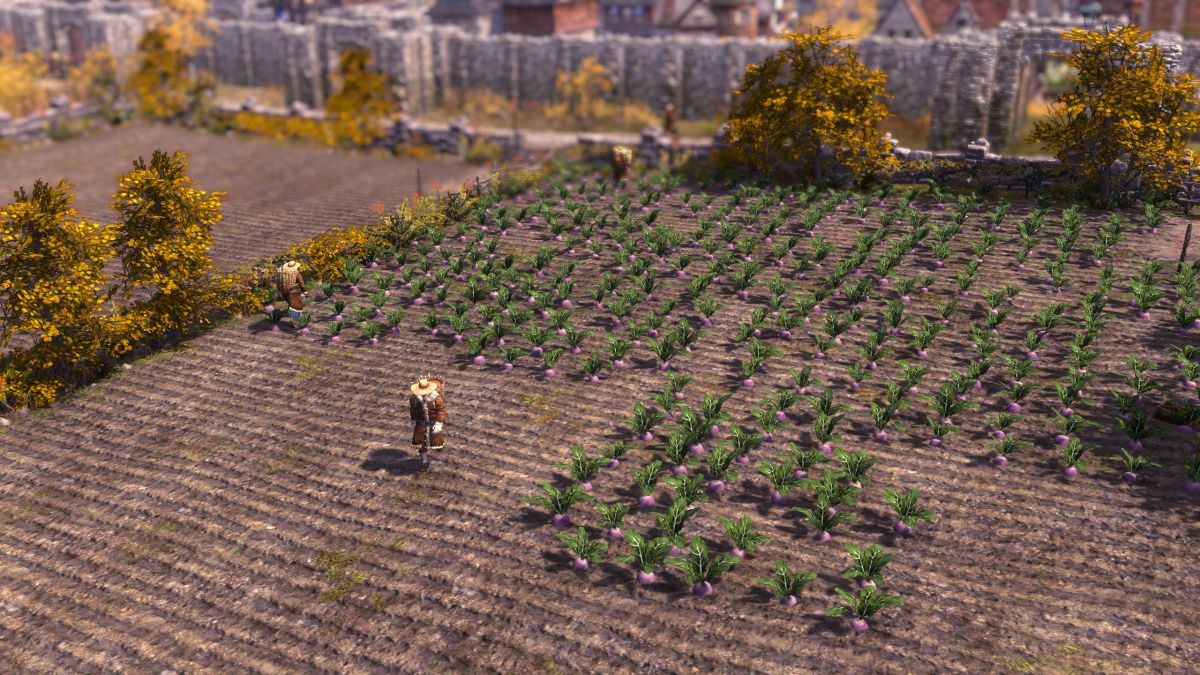Farthest Frontier is a popular computer game that requires players to carefully manage their farming activities to ensure the survival and growth of their civilization. In this challenging game, players need to consider factors such as weather, soil fertility, and crop rotation to maximize their food production. In this article, we will discuss the best crops to grow in Farthest Frontier and the importance of crop rotation for sustainable farming.
The Importance of Farming in Farthest Frontier
Farming plays a crucial role in the gameplay of Farthest Frontier. As the player’s civilization pushes the boundaries of civilization in a hostile environment, proper farming is essential for survival. Just like in the real world, players need to understand different crops and their requirements to ensure a steady food supply for their civilization.
Compared to other colony simulation games, farming in Farthest Frontier is more complex. Factors such as temperature tolerance, weed and rock presence, and soil fertility all impact the success of crop growth. It can be overwhelming for beginners, but with the right knowledge and strategies, players can master the art of farming in the game.
The Best Crops for Farthest Frontier
Choosing the right crops to grow in Farthest Frontier is crucial for a successful farming operation. While the choice of crops may vary depending on the game’s requirements and challenges, there are some crops that are generally considered wise choices. Let’s take a look at some of the best crops to grow in Farthest Frontier:
Turnips
Turnips are a versatile crop that can grow quickly regardless of the weather conditions. In a game where sudden season changes can threaten crop growth, turnips provide a reliable option that can withstand such challenges. Additionally, turnips allow for multiple harvests, making them an efficient choice for food production.
Peas
Peas may not thrive under scorching summer sun, but they have the unique ability to improve the fertility of the field where they are planted. Harvesting peas can contribute to the long-term health of the field, making it a valuable crop for sustainable farming in Farthest Frontier.
Beans
If you’re looking for a crop to harvest during the summer, beans are an excellent choice. They are highly heat-resistant and can thrive in challenging conditions. In addition to their resilience, beans also have the ability to improve soil fertility, making them a valuable crop for maintaining the health of your fields.
Buckwheat
Buckwheat is a fast-growing plant that acts as a natural weed suppressant. By planting buckwheat, you can save time on field maintenance as this crop helps control weed growth. It’s an ideal choice for players who want to focus on other aspects of the game without sacrificing the health of their fields.
Carrots
Carrots have special characteristics that make them suitable for certain farming situations. While they may not grow efficiently in fields with too many rocks, carrots can still thrive in areas with poor soil fertility. If you haven’t had the chance to invest much time in field maintenance, carrots can be a viable option for food production.
The Importance of Crop Rotation
In Farthest Frontier, intelligent crop rotation is key to maintaining soil fertility and maximizing crop yields. Crop rotation involves strategically planning which crops to grow in specific fields and when to plant them. By understanding the benefits of different crops and their impact on soil health, players can create an effective crop rotation strategy.
Crop rotation serves several purposes in Farthest Frontier. First, it helps improve soil fertility by balancing nutrient levels and reducing the risk of nutrient depletion. Certain crops, such as peas and beans, are known for their ability to fix nitrogen in the soil, which is essential for healthy plant growth. By rotating these crops with others that have different nutrient requirements, players can ensure that their fields remain fertile and productive.
Second, crop rotation can help control weeds and pests. Some crops, like buckwheat, have natural weed-suppressing properties, while others are more susceptible to certain pests. By rotating crops with different pest and weed tolerance, players can minimize the risk of infestations and reduce the need for chemical interventions.
Finally, crop rotation can prevent the buildup of crop-specific diseases and pathogens. Different crops have varying vulnerabilities to certain diseases, and planting the same crop repeatedly in the same field can lead to disease outbreaks. By rotating crops, players can disrupt the life cycles of pests and diseases, reducing the risk of crop losses.
To implement an effective crop rotation strategy, players can use the in-game scheduling feature. By selecting the desired year and crop, players can plan their planting schedule accordingly. It’s important to consider factors such as crop growth time, environmental conditions, and field health when deciding on the rotation schedule.
Designing an Efficient Crop Rotation Strategy
Creating an efficient crop rotation strategy requires careful planning and consideration of various factors. While there is no one-size-fits-all approach, here are some general guidelines to help you design a successful crop rotation strategy in Farthest Frontier:
Understand your field’s issues: Each field in the game may have different characteristics and challenges. Before implementing a crop rotation plan, assess the specific issues of each field, such as soil fertility, weed presence, and rockiness. This understanding will help you select the most suitable crops for each field.
Consider crop growth time: Different crops have varying growth times. Plan your crop rotation schedule based on the time it takes for each crop to mature. This will ensure a continuous food supply for your civilization and minimize idle fields.
Address soil fertility: Some crops, like peas and beans, can improve soil fertility. Consider incorporating these crops into your rotation to maintain and enhance the health of your fields. Avoid planting crops that deplete soil nutrients in the same field repeatedly.
Weed suppressant crops: Include crops like buckwheat in your rotation to control weed growth. These crops have natural weed-suppressing properties and can help reduce the need for manual weeding.
Avoid over-fertility: Certain crops, such as wheat, flax, and rye, can be hard on the soil and lower its fertility. Rotate these crops with others to prevent over-fertility in your fields. Avoid planting these crops in the same field too often.
Remember, once you’ve established a successful crop rotation strategy, try not to make drastic changes unless necessary. Stick to your plan and monitor the results to fine-tune your strategy over time.
Conclusion
Farming in Farthest Frontier is a challenging but rewarding experience. By choosing the right crops and implementing an efficient crop rotation strategy, players can ensure the survival and growth of their civilization. Consider the unique characteristics of each crop, such as turnips’ resilience, peas’ soil-improving properties, beans’ heat resistance, buckwheat’s weed-suppressing abilities, and carrots’ adaptability to poor soil fertility. Additionally, prioritize crop rotation to maintain soil health, control pests and weeds, and prevent the buildup of crop-specific diseases.
By understanding the importance of farming and adopting effective strategies, players can master the art of agriculture in Farthest Frontier and lead their civilization to prosperity. So, roll up your sleeves, grab your virtual farming tools, and get ready to cultivate the best crops in Farthest Frontier!
Other Technical Reviews:- Reviews







